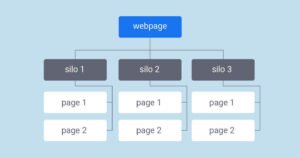Many business owners agree that Internet marketing is a necessary and highly effective way to generate more sales. Web marketing has been around for quite some time. Still, with the introduction of search engine optimization, SEO, and social media marketing, or SEM, these techniques have become even more effective. If you’re unsure what the difference between SEO and SEM is and how they work together to make your business successful online, this blog post will provide you with all the answers.
Search engine optimization and search engine marketing are two different but related disciplines. SEM is the process of understanding your target market and providing them with a more personalized experience. At the same time, SEO is optimizing your website to provide better search results for users.
Table of Contents
What’s SEM?
Search Engine Marketing (SEM) is about making money by providing valuable information to someone who wants it. The primary goal of SEM is to generate leads or traffic for the ads you’re running on Google or Facebook (or other social media sites). A successful strategy will primarily be focused on improving conversion rates so that you can spend less on advertising over time because each click generates more revenue per customer.
What is SEO?
Search Engine Optimization (SEO) is the process of making your website easier to find by Google’s search crawlers. Improving your site’s ranking on Google results will result in more traffic to your site, which will generate more leads or customers. The best way to improve your site’s ranking is to create compelling content that people want to read. It could be easily done through these SEO Tools.
SEO and SEM: What’s the Difference?
SEO stands for Search Engine Optimization, which is the process of improving your website’s visibility in search results. SEM stands for Search Engine Marketing, so this is a term you might hear when you purchase advertising services on search engines like Google AdWords or Bing Ads.
In general, SEO makes your site more visible through better placement in search engine rankings. In contrast, SEM refers to promoting your site using paid advertisements on the main ads of popular search engines. SEO and SEM both involve search engine marketing, but the latter is more commonly used to drive traffic to a website.
SEO works best when you optimize and improve onsite content, but SEM’s focus is more direct and actionable. SEM doesn’t work great with in-depth information, so it isn’t easy to rank in search results.
SEO is usually an involved process involving various tactics such as internal linking, keyword optimization, content writing, link building, and link acquisition. SEM works better with simplified steps to improve your site’s ranking, such as creating websites relevant to the target audience, implementing PPC advertising campaigns using social media sites to promote your business and running paid advertising on popular search engines.
SEO and SEM: How They Work?
Content Marketers have a good understanding of SEM. They know that each site linked to their site has the potential to drive more traffic to each page they write.
SEO is less understood and most valuable when used alongside SEM. SEO provides marketers with a foundation for their paid advertising campaign by helping them increase the value of their website; hence its name, Search Engine Optimization (SEO). SEO will help increase the ROI of a company’s SEM efforts. This is because a website that has been optimized using SEO can be used in conjunction with popular platforms like Google AdWords, Bing, Facebook and LinkedIn. Most companies focus on paid advertising campaigns rather than improving their site’s organic performance.
SEO and SEM: How it All Works Together?
You cannot use SEO or SEM alone. It works best when used alongside one another. In a perfect world, you would have a website that ranks well on Google, has great optimized and optimized content for each social media platform, and a Facebook Ad Campaign to drive targeted traffic to your website. Then you can leverage all of this data to drive leads and customers to transact business with you. That is the key difference between SEM and SEO; it’s not just “one strategy or the other” but an effective combination of both strategies depending on your industry, goals, and current marketplace conditions.
What is the relationship between SEO and SEM?
If you think about it, how would search engine optimization and PPC marketing be complementary? Your ultimate goal is to get the website visitor in front of your product or service.
To make this happen, you need to optimize your website (using SEO) so that people can find it as quickly as possible. Then using PPC ads such as Facebook ads or Google Adwords (or other platforms like LinkedIn) will help drive targeted qualified traffic to your site so that they can complete the sales funnel. Of course, having a solid SEO foundation will make all of this easier for you since you’ll automatically be better positioned for Google AdWords, which helps you attract more qualified visitors to your site by improving your rating on search engine results pages.
SEO and SEM: How do They Work to Solve a Business Problem?
SEO solves the following business problems:
- SEO helps build awareness about your business on the web, so when a user does a Google search for what you do, they end up on your website. This means that your SEO efforts have to be as comprehensive as possible to rank well organically and properly optimize every page of your site.
- SEO is essential to the PPC campaign because organic search engine rankings are directly linked to the performance of paid search campaigns.
- Using SEO and PPC ads works best when used in conjunction with each other; it helps improve the performance of both types of campaigns by making the user experience more valuable and effective than just paid or organic search engine ranking alone.
- Using SEO and PPC together allows you to use real-time data from your campaigns to optimize your optimization strategies continually. This maximizes your investment in the campaign.
SEM helps solve the following business problems:
- SEM helps companies acquire leads for their business by investing in popular platforms like Facebook or Google AdWords. These platforms can provide direct communication with users who are more actively looking to buy goods or services in exchange for their email address or phone number.
- SEM and SEO can be used as lead generation tools because they drive leads using online digital marketing channels that feed directly into its sales funnel and strategic digital marketing plan objectives.
- SEM and SEO can work together because the campaign will likely be optimized using the same types of data that you would use to optimize your websites, such as keywords and ad copy. This can help to improve each campaign.
- Using SEM and SEO together increases your chances of success because they help maximize the return on investment (ROI) of a paid PPC or SEO campaign while also helping to maximize your online visibility.
Relevancy Score is a form of algorithmic web search engine optimization commonly used in feed-based search engines like Google, Yahoo!, Bing, and others less focused on link popularity than other forms of search engine marketing.
SEO and SEM: Future Developments
SEO and SEM are constantly evolving. You will be expected to know how to implement new SEO and paid advertising algorithms and stay ahead of the game. Consider the following:
- Google is constantly revamping its algorithm to provide users with better search results. If a new algorithm is released, SEOs will need to ensure they know how to optimize their website to satisfy the latest updates that Google puts into place.
- Digital Marketing is becoming the new face of marketing. As digital marketing becomes standard, SEOs will need to be able to effectively communicate with their clients and help them understand how SEO can help their company perform better in a digital world.
- Online Rater is an emerging concept that allows website users to ‘vote’ on a page and give it a rating. Google, Yahoo!, Bing, and others incorporate this feature into their algorithms. If you do not have high ratings for a search term when it comes up in the search results, you will not rank well organically on that term in the future.
How can you take your business to the next level?
Use SEM and SEO to drive qualified leads because these two strategies help you connect with customers more naturally than passive methods like paid search cannot do. Set up Google Analytics. If you have not done so yet, ensure that your website has an analytics account set up on an integrated platform that allows Google Analytics to track all traffic coming in from everywhere on your site.
Conclusion
SEM and SEO have evolved to become much more than just a way to drive traffic to your website. These two strategies are essential for any business looking to succeed online in the digital age. As the digital marketing landscape changes, you need to be comfortable with every aspect of online marketing. SEM and SEO are only a couple of areas that will always change, but they are critical to a company’s success.







